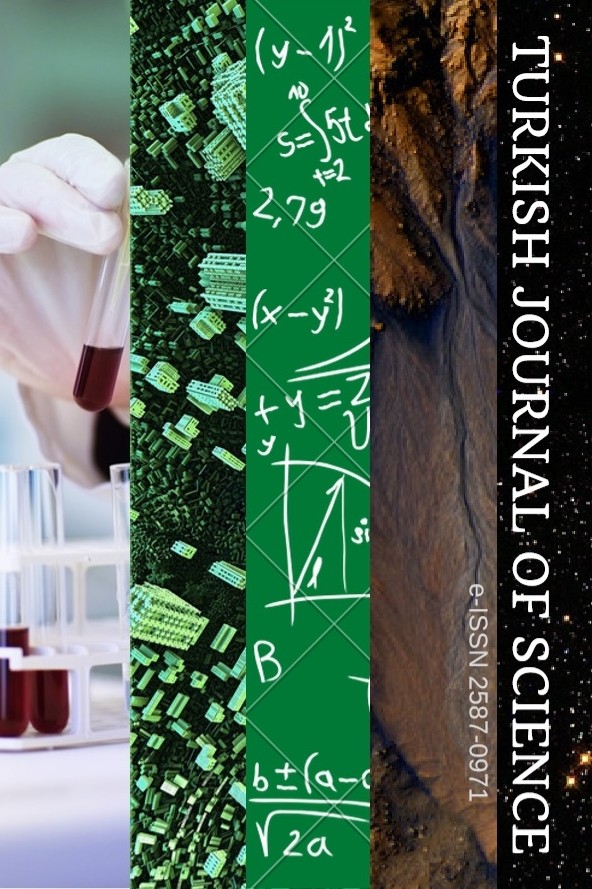Mathematical Modeling of the Shape of Cavity Created with Laser Using Melting, Boiling Temperature.
Mathematical Modeling of the Shape of Cavity Created with Laser Using Melting, Boiling Temperature.
Mathematical Modeling, Fourier method, Laser Temperature, Heat,
___
- Referans1 L. Urtekin, Ö. Keleş, Biyomedikal Uygulamalar İçin TiN Kaplı Ti6Al4V Alaşımının Mekanik Özelliklerinin Araştırılması, Savunma Bilimleri Dergisi, 18/2 (2019) 91.
- Referans2 C.N. Hart, G. Dip and P.R. Wilson, Evaluation of welded titanium joints used with cantilevered implant-supported prostheses, The Journal Of Prosthetic Dentistry, 96 (2006) 25
- Referans3 M. Qian, W. Xu, M. Brandt, and H.P. Tang, Additive manufacturing and postprocessing of Ti-6Al-4V for superior mechanical properties, MRS Bulletin, 41 (2016) 775.
- Referans4 M. Król*, T. Tański, Surface Quality Research For Selective Laser Melting Of Ti-6Al-4V Alloy, Arch. Metall. Mater., 61 (2016), 1291.
- Referans5 I. Gurrappa, Characterization of titanium alloy Ti-6Al-4V for chemical, marine and industrial applications, Materials Characterization 51 (2003) 131.
- Referans6 M. Balasubramanian, V. Jayabalan, and V. Balasubramanian, Response Surface Approach to Optimize the Pulsed Current Gas Tungsten Arc Welding Parameters of Ti-6Al-4V Titanium Alloy, METALS AND MATERIALS International, Vol. 13, No. 4 (2007), pp. 335-344
- Referans7 Z. Guo, S. Malinov, W. Sha, Modelling beta transus temperature of titanium alloys using artificial neural network, Computational Materials Science 32 (2005) 1–12
- Referans8 S. Lazare, J. Lopez, F. Weisbuch, High-aspect-ratio microdrilling in olymericmaterials with intense KrF laser radiation, Appl. Phys. 1999, A 69 [Suppl.], S1–S6
- Referans9 S. Lazare And V. Tokarev, Recent Experimental and Theoretical Advances in Microdrilling of Polymers with Ultraviolet Laser Beams, Fifth International Symposium on Laser Precision Microfabrication, Proceedings of SPIE 2004, Vol. 5662, 221-231. Referans10 T. Canel, A.U. Kaya, B. Çelik, Parameter optimization of nanosecond laser for microdrilling on PVC by Taguchi method, Optics & Laser Technology, 2012, 44; 2347-2353
- Referans11 T. Canel, E. Kayahan, L. Candan, S. Fidan, T. Sınmazçelik, Influence of laser parameters in surface texturing of polyphenylene sulfide composites, J. Appl. Polym. Scı. 2019, Doi: 10.1002/App.47976
- Referans12 T. Canel, M. Zeren, T. Sınmazcelik, Laser parameters optimization of surface treating of Al 6082-T6 with Taguchi method, Optics & Laser Technology, 2019, 120; 105714
- Referans13 T. Canel, İ. Bağlan, T. Sinmazcelik, Mathematical modelling of laser ablation of random oriented short glass fiber reinforced Polyphenylene sulphide (PPS) polymer composite. Optics & Laser Technology, 2019, 115; 481-486
- Referans 14 T. Canel, İ. Bağlan, T. Sınmazçelik, Mathematical modeling of heat distribution on carbon fiber Poly(etherether-ketone) (PEEK) composite during laser ablation, Optics & Laser Technology, 2020, 127; 106190
- Referans15 T. Canel, İ. Bağlan, Mathematical Modelling of One Dimensional Temperature Distribution As A Function Of Laser Intensity On Carbon Fiber Reinforced Poly(Ether-Ether-Ketone)-(Peek) Composite, TWMS J. App. and Eng. Math. 2020, V.10, N.3, pp. 769-777
- ISSN: 2587-0971
- Başlangıç: 2016
- Yayıncı: Ahmet Ocak AKDEMİR
The Representation and Finite Sums of the Padovan-p Jacobsthal Numbers
Partial Sums of The Miller-Ross Function
Mathematical Modeling of the Shape of Cavity Created with Laser Using Melting, Boiling Temperature.
The Complex-type Pell p-Numbers in Finite Groups
STRUCTURE OF NEARLY α−COSYMPLECTIC MANIFOLDS
Numerical Solution of Volterra Integral Equations Using Hosoya Polynomial
Merve Zeynep GEÇMEN, Ercan ÇELİK, Mustafa Ali DOKUYUCU
The Period and Rank of the Complex-type Padovan-p Numbers Modulo m
The Solution of Linear Volterra Integral Equation of the First Kind with ZZ- Transform
